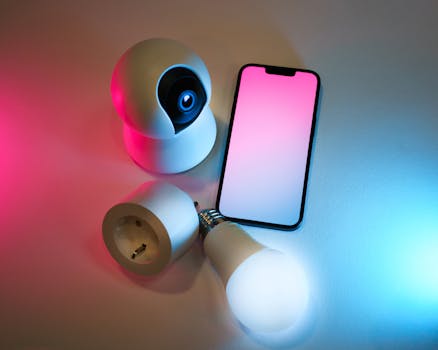
Smart Homes and Smart Living: The Technological Transformation of European Homes by 2025
Smart Homes and Smart Living are revolutionizing the way we live, work, and interact with our surroundings. The European home is undergoing a significant transformation, driven by advances in technology and the Internet of Things (IoT). By 2025, smart homes and smart living will become the norm, offering unparalleled convenience, efficiency, and sustainability.
Introduction to Smart Homes and Smart Living
Smart homes and smart living refer to the integration of technology and automation in residential settings. This includes the use of sensors, cameras, and other devices to monitor and control various aspects of the home, such as temperature, lighting, security, and entertainment. The goal of smart homes and smart living is to create a comfortable, convenient, and sustainable living environment that enhances the quality of life for occupants.
Key Features of Smart Homes and Smart Living
Some of the key features of smart homes and smart living include:
- Home automation: The ability to control and monitor various aspects of the home, such as temperature, lighting, and security, remotely or automatically.
- Energy efficiency: Smart homes and smart living aim to reduce energy consumption and promote sustainability through the use of energy-efficient appliances, lighting, and heating and cooling systems.
- Convenience: Smart homes and smart living offer unparalleled convenience, with features such as voice control, automatic lighting, and smart door locks.
- Security: Smart homes and smart living prioritize security, with features such as motion detection, video surveillance, and smart door locks.
- Sustainability: Smart homes and smart living promote sustainability, with features such as energy-efficient appliances, rainwater harvesting, and greywater reuse.
Benefits of Smart Homes and Smart Living
The benefits of smart homes and smart living are numerous, including:
- Increased convenience and comfort: Smart homes and smart living offer unparalleled convenience and comfort, with features such as voice control, automatic lighting, and smart door locks.
- Improved energy efficiency: Smart homes and smart living aim to reduce energy consumption and promote sustainability through the use of energy-efficient appliances, lighting, and heating and cooling systems.
- Enhanced security: Smart homes and smart living prioritize security, with features such as motion detection, video surveillance, and smart door locks.
- Increased property value: Smart homes and smart living can increase property value, making them more attractive to potential buyers and renters.
- Improved quality of life: Smart homes and smart living can improve the quality of life for occupants, with features such as air quality monitoring, noise reduction, and smart lighting.
Challenges and Limitations of Smart Homes and Smart Living
While smart homes and smart living offer numerous benefits, there are also challenges and limitations to consider, including:
- High upfront costs: The initial investment in smart home technology can be high, making it inaccessible to some homeowners and renters.
- Complexity: Smart home technology can be complex, requiring significant technical expertise to install and maintain.
- Interoperability: Different smart home devices and systems may not be compatible, making it difficult to integrate them into a single, seamless system.
- Security risks: Smart homes and smart living can be vulnerable to security risks, such as hacking and data breaches.
- Dependence on technology: Smart homes and smart living can create a dependence on technology, making it difficult for occupants to function without it.
Conclusion
Smart homes and smart living are revolutionizing the way we live, work, and interact with our surroundings. By 2025, smart homes and smart living will become the norm, offering unparalleled convenience, efficiency, and sustainability. While there are challenges and limitations to consider, the benefits of smart homes and smart living far outweigh the drawbacks. As the European home continues to evolve, it is likely that smart homes and smart living will play an increasingly important role in shaping the future of residential living.

